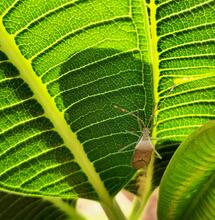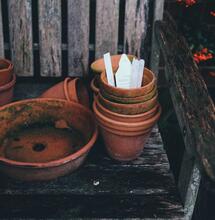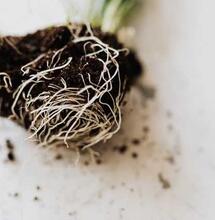Calculating Yields in the Grow Room

Many growers will boast about how many kilos they produce and then share these experiences with friends. However, the reality is that not every harvest is equal to a good yield. Let's find out how to calculate the yield correctly.
How much can a plant produce?
One of the most discussed parameters for yield is the amount of dried flower achieved from a single plant. However, this number does not say much about the actual yield of the grow room. Information about the amount of flower harvested from a single plant tells more about the size of the plant than about the actual yield. Logically, a plant that yields 15 grams must be much smaller than one that yields 50 grams. These numbers don't tell you much about how much time it takes to grow the plants until the final harvest. Instead, the weight of the total yield from one plant can help estimate how many buds a grower has produced in 1 m2.
The higher the yield from one plant, the smaller the number of buds in the grow room. It's important to note that we're talking about indoor cultivation now. Once the plants are moved outside, yields vary greatly due to many different factors. A single photo-period plant (not an auto-flowering one) can yield anything from a few dozen grams to several hundred or even several thousand grams outdoors, but we're going to focus on indoor cultivation here.
Calculating a plant's yield is made even more difficult when you try to compare multiple grow rooms with different parameters. If one grower puts four plants under one light, while another puts 12 plants in the same grow room, it's difficult to judge their performance based on the yields of individual plants.
How much can you harvest per square meter?
Another number that is often used as an indicator of growing success is a square meter. The information it provides is far more useful. This way you can estimate how many grams the grower is getting in a certain area and easily compare yields from grow rooms with different parameters. It no longer matters how many plants are grown. A comparison that takes into account the size of the grow room is much easier and more accurate. But even this method does not take into account the time and costs invested until harvest. It is important to know how long the growth phase lasted because more electricity is used for lighting during this phase than later in the flowering phase. Therefore, there are other parameters to consider.
How many grams per watt are possible?
The advanced grower measures crop productivity by comparing the intensity of the light source with the amount of final harvest (in grams). This factor can be quantified by dividing the total weight of dried flowers by the intensity of the light source (measured in watts). For example, 600W sodium lamp, the harvest of dried flowers 450 grams - 450 divided by 600 is 0.75. Crop productivity is therefore 0.75 grams per watt. The gram/watt unit for determining the exact yield is generally accepted. In this way, you can get even closer to the numbers that tell you what crop productivity really is.
It becomes clear that it does not matter how big the grow room is, how many plants there are in it, or how much plant material is grown per square meter. Imagine a grower who manages to produce 400 grams under a 400W lamp, while another gets the same yield with a 600W lamp. When these two guys get together and just talk about their yields, it seems like both are equally successful. Of course, in this case, the one who grows under the 400W lamp is more successful,because his yield is one gram per watt, while the other only manages 0.67 grams per watt.
More From Soft Secrets
10 Top Tips for Producing Big Yields In Small Indoor Spaces
Can you Grow Cannabis Without Grow Lights
How To Lower Costs Growing Indoors



.png)




